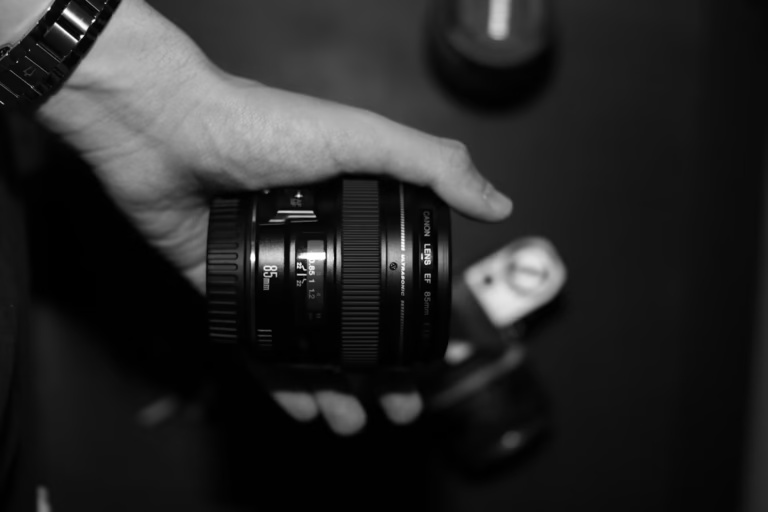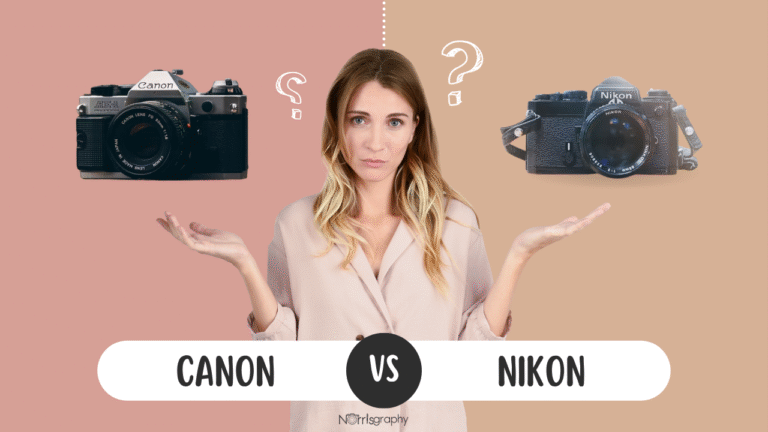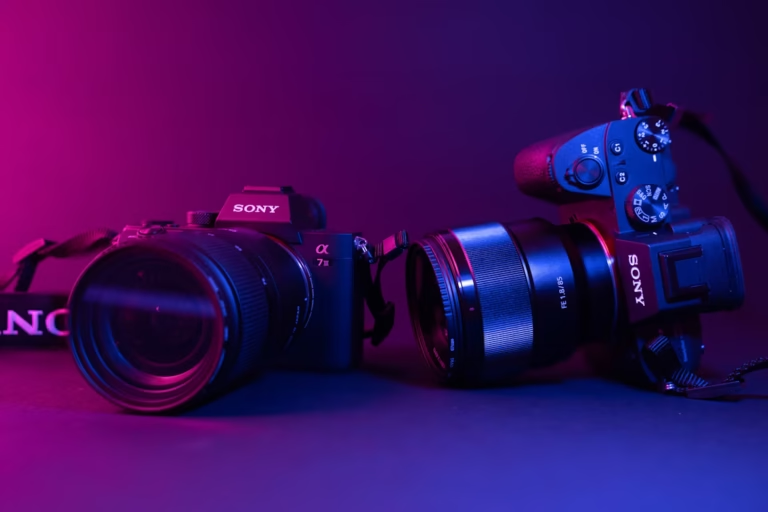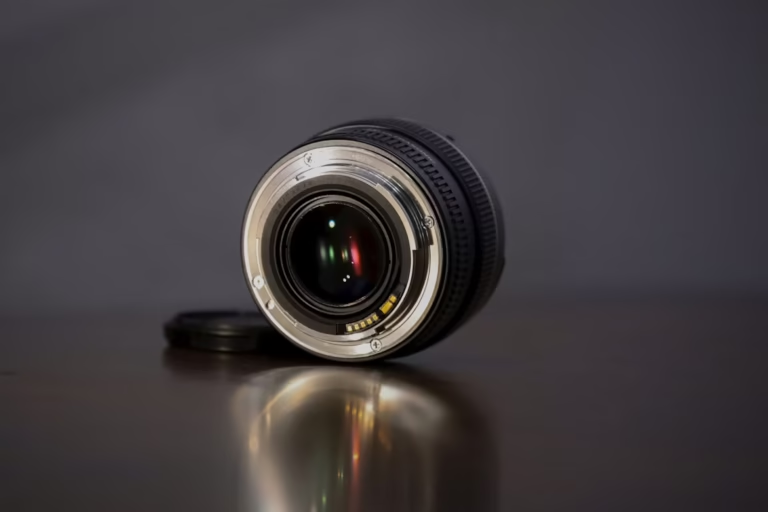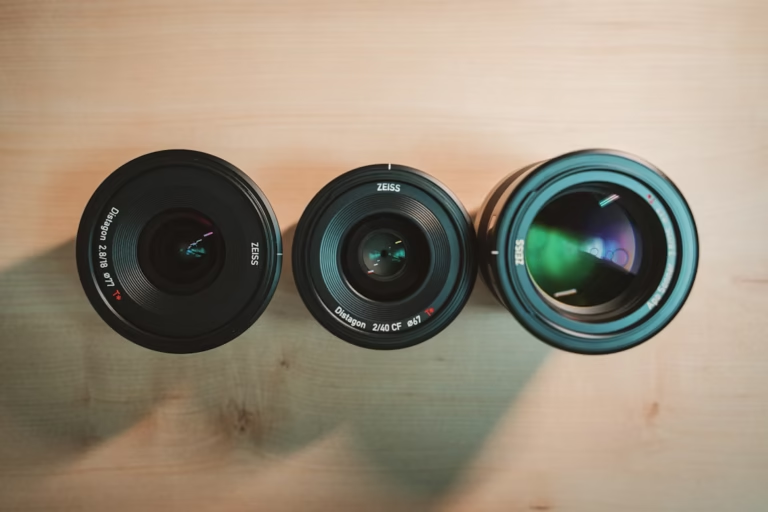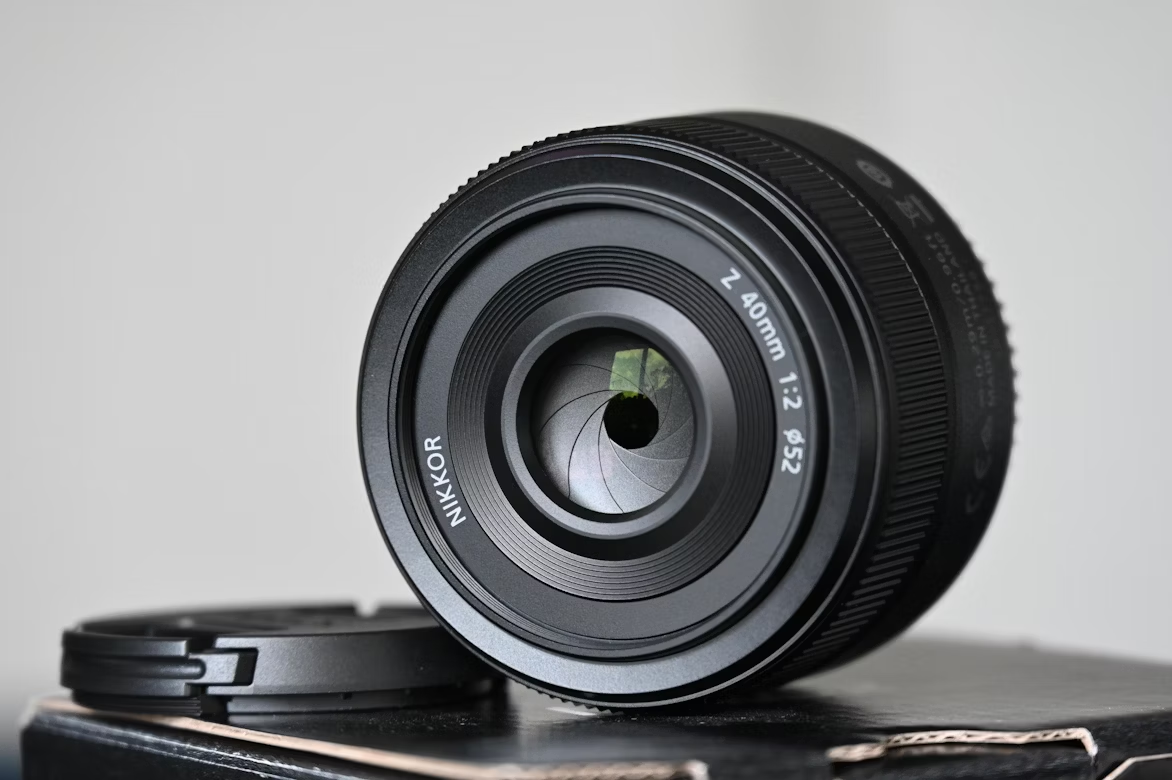
Camera lenses are vital components of a camera system, designed to focus light onto a camera’s sensor or film to create images. They come in various types, each tailored for specific photographic purposes, such as capturing wide landscapes or zooming in on distant subjects. Choosing the right lens can significantly enhance the quality and creativity of your photography.
Key Points
- Function: Lenses focus light to form images, influencing perspective, depth, and clarity.
- Variety: Different lenses (e.g., wide-angle, telephoto, macro) suit different photography styles.
- Specifications: Focal length and aperture are critical factors affecting image capture.
- Considerations: Compatibility, budget, and intended use guide lens selection.
What Are Camera Lenses?
Camera lenses are optical devices that attach to a camera body to focus light onto the camera’s sensor or film, enabling the creation of images. They are available in a wide range of types, each designed for specific photographic purposes, from capturing vast landscapes to zooming in on distant subjects or photographing tiny details. The choice of lens has a direct impact on the quality, perspective, and style of the photographs produced, making it a critical tool for photographers.
What Does a Lens Do on a Camera?
A camera lens gathers and focuses light from a scene onto the camera’s sensor or film, forming an image. The lens influences several key aspects of the photograph:
- Focal Length: Measured in millimeters (mm), focal length determines the angle of view. A shorter focal length (e.g., 24mm) captures a wider scene, ideal for landscapes, while a longer focal length (e.g., 200mm) narrows the view, perfect for distant subjects like wildlife.
- Aperture: Expressed as f-stops (e.g., f/2.8), the aperture controls how much light enters the camera. A larger aperture (smaller f-number) allows more light, aiding low-light photography and creating a shallow depth of field for blurred backgrounds.
- Image Quality: The lens’s design, including the quality and arrangement of its optical elements, affects sharpness, contrast, and the presence of optical aberrations like distortion or chromatic aberration.
Types of Camera Lenses
Camera lenses are categorized based on their focal length, design, and intended use. Below are the primary types:
- Wide-Angle Lenses: With focal lengths typically between 14mm and 35mm, these lenses offer a broad field of view, making them ideal for landscapes, architecture, and interior photography. They emphasize depth and can create dramatic perspectives.
- Standard Lenses: Ranging from 35mm to 70mm, these lenses provide a field of view similar to the human eye, making them versatile for portraits, street photography, and general use.
- Telephoto Lenses: With focal lengths from 70mm to 300mm or more, telephoto lenses magnify distant subjects, making them suitable for wildlife, sports, and portrait photography.
- Macro Lenses: Designed for close-up photography, macro lenses achieve a 1:1 reproduction ratio or better, capturing small subjects like insects or flowers in fine detail.
- Zoom Lenses: These offer variable focal lengths (e.g., 24-70mm), providing flexibility without changing lenses. They are convenient but may sacrifice some image quality compared to prime lenses.
- Prime Lenses: With a fixed focal length (e.g., 50mm), prime lenses often deliver superior sharpness, wider apertures, and better low-light performance, making them popular for portraits and low-light shooting.
- Special-Purpose Lenses: These include tilt-shift lenses for perspective control in architecture photography, fisheye lenses for extreme wide-angle effects, and other specialized designs for creative or technical needs.
| Lens Type | Focal Length Range | Common Uses |
|---|---|---|
| Wide-Angle | 14mm–35mm | Landscapes, architecture, interiors |
| Standard | 35mm–70mm | Portraits, street, and general photography |
| Telephoto | 70mm–300mm+ | Wildlife, sports, portraits |
| Macro | Varies (e.g., 50mm, 100mm) | Close-up photography (e.g., insects, flowers) |
| Zoom | Varies (e.g., 24-70mm) | Versatile, multi-purpose shooting |
| Prime | Fixed (e.g., 50mm) | Portraits, low-light, high-quality images |
| Special-Purpose | Varies | Architecture, creative effects |
Lens Construction
Camera lenses are complex optical systems, typically consisting of multiple lens elements arranged to optimize image quality. Key aspects of lens construction include:
- Multiple Elements: Lenses range from simple designs with one element (e.g., in basic cameras) to complex zoom lenses with over 20 elements. These elements are often grouped and cemented together to form a cohesive optical system.
- Coatings: The front element is coated to reduce abrasion, lens flare, and surface reflectance while adjusting color balance. Multi-coatings enhance contrast and minimize flare.
- Aberration Control: Lens elements are shaped to minimize optical aberrations, such as chromatic aberration (color fringing), spherical aberration (focus inconsistencies), and distortion (curved lines). Zoom lenses often involve compromises due to their variable focal lengths.
- Focusing Mechanism: Lenses focus by adjusting the distance between the lens and the sensor or by moving internal elements. Advanced systems, like Nikon’s Close-Range Correction or Canon’s floating element system, use cams to maintain image quality across focusing distances.
- Materials: Common materials include glass (for optical clarity and durability), quartz glass, fluorite (to reduce chromatic aberration), and plastics (for aspherical elements in high-performance lenses). Plastics are also used in budget lenses, but are avoided for outer elements due to scratching.
- Aperture Mechanism: An iris diaphragm adjusts the aperture size, controlling light intake. Early lenses used Waterhouse stops (metal plates with fixed apertures), but modern lenses feature adjustable diaphragms.
- Special Features: Some lenses include image stabilization to reduce camera shake, weather sealing for durability, and UV-blocking coatings to prevent lens fungus.
Common Lens Sizes and Specifications
Lenses vary in focal length, aperture, and additional features, which determine their suitability for different tasks:
- Focal Lengths:
- Wide-Angle: 14mm–35mm
- Standard: 35mm–70mm
- Telephoto: 70mm–300mm
- Ultra-Wide: <14mm
- Super-Telephoto: >300mm
- Apertures:
- Fast Lenses: f/1.4–f/2.8 (ideal for low-light and shallow depth of field)
- Slow Lenses: f/4–f/5.6+ (better for deeper depth of field, e.g., landscapes)
- Other Specifications:
- Image Stabilization (IS/VR): Reduces blur from camera shake, useful for handheld shooting.
- Weather Sealing: Protects against dust and moisture, ideal for outdoor photography.
- Autofocus Speed: Critical for fast-moving subjects like sports or wildlife.
| Specification | Details | Use Case |
|---|---|---|
| Focal Length (Wide) | 14mm–35mm | Landscapes, architecture |
| Focal Length (Standard) | 35mm–70mm | General, portraits |
| Focal Length (Telephoto) | 70mm–300mm+ | Wildlife, sports |
| Aperture (Fast) | f/1.4–f/2.8 | Low-light, portraits |
| Aperture (Slow) | f/4–f/5.6+ | Landscapes, bright conditions |
| Image Stabilization | Reduces shake | Handheld, low-light shooting |
| Weather Sealing | Dust/moisture resistance | Outdoor photography |
What to Consider When Buying a Camera Lens
Selecting the right lens involves balancing your photographic needs with practical considerations:
- Purpose: Match the lens to your photography style. For example, wide-angle lenses suit landscapes, while telephoto lenses are better for sports or wildlife.
- Camera Compatibility: Ensure the lens mount matches your camera (e.g., Canon EF, Nikon F, Sony E). Some lenses are designed for specific sensor sizes (full-frame or APS-C).
- Budget: Lenses range from affordable kit lenses to high-end professional models. Consider cost versus quality and features.
- Image Quality: Research reviews and sample images to evaluate sharpness, contrast, and aberration control.
- Weight and Size: Larger lenses may be less portable, which matters for travel or extended shoots.
- Aperture Range: A wide maximum aperture (e.g., f/1.8) is ideal for low-light and creative effects, while slower lenses (e.g., f/4) are more budget-friendly.
- Zoom vs. Prime: Zoom lenses offer flexibility, while prime lenses provide better image quality and wider apertures.
- Special Features: Look for image stabilization, weather sealing, or macro capabilities if needed for your work.
FAQ
How to Read a Camera Lens?
Lens markings typically include the focal length (e.g., 50mm), maximum aperture (e.g., f/1.8), and sometimes additional features like “STM” (stepping motor for autofocus). For example, “Nikon AF-S 35mm f/1.4G” indicates a 35mm prime lens with a maximum aperture of f/1.4, compatible with Nikon’s F-mount.
How to Clean a Camera Lens?
Use a blower to remove loose dust, then gently wipe the lens with a microfiber cloth. For stubborn marks, apply a small amount of lens cleaning solution to the cloth (not directly on the lens) and wipe in a circular motion.
What Does a 1.5 Lens Mean?
The term “1.5 lens” likely refers to the crop factor of APS-C sensors (1.5x for Nikon/Sony), which affects the effective focal length. For example, a 50mm lens on an APS-C camera behaves like a 75mm lens on a full-frame camera.
Which Lens Is Used in a Real Image?
Most camera lenses produce real images by converging light rays onto the sensor or film when properly focused, as opposed to virtual images seen in some optical systems like viewfinders.
How Do I Lens a Picture?
This likely means choosing the right lens for a photograph. Select a lens based on the subject and desired effect: wide-angle for landscapes, telephoto for distant subjects, or macro for close-ups.
Which Camera Lens Is Best?
The “best” lens depends on your needs. A 50mm f/1.8 prime lens is often recommended for beginners due to its versatility, sharpness, and affordability.
What Is the Main Purpose of a Lens?
The primary purpose of a lens is to focus light onto the camera’s sensor or film to create a clear image.
What Is a Normal Camera Lens Called?
A normal lens has a focal length roughly equal to the diagonal of the sensor or film. For full-frame cameras, this is around 50mm, often referred to as a “standard” lens.
What Does a 2.8 Lens Mean?
A lens with a maximum aperture of f/2.8 allows significant light intake, making it suitable for low-light conditions and creating a shallow depth of field for artistic effects like background blur.

